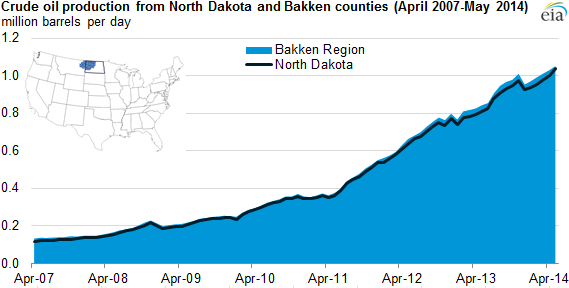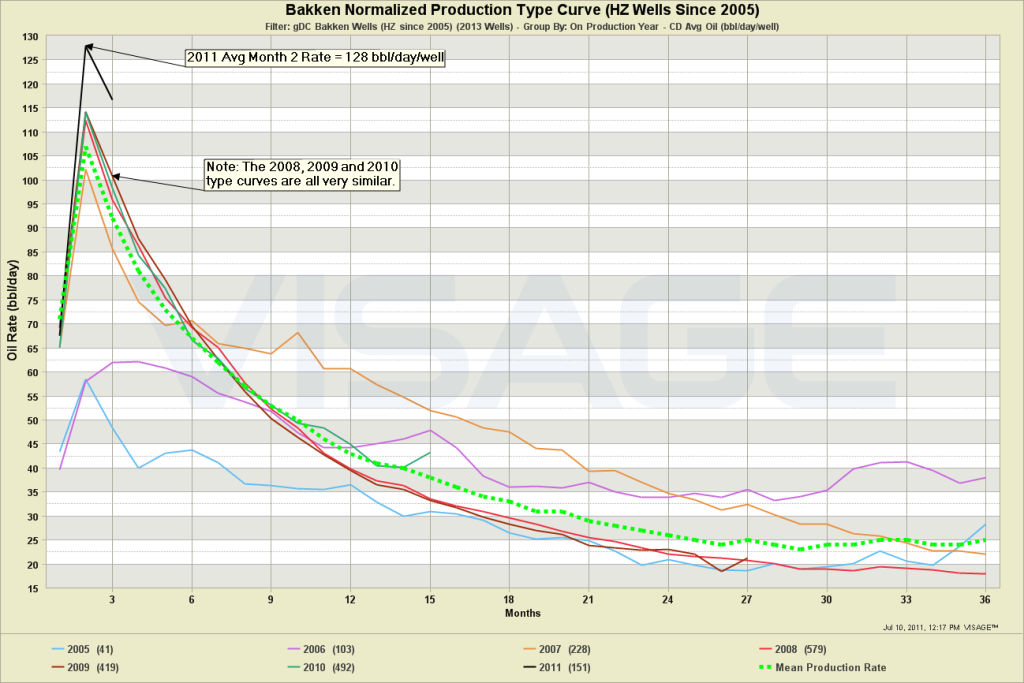Recent news has not been kind to promoters of the U.S. oil and gas boom. A few short months ago, anyone who questioned the long-term viability of fossil fuel supplies from shale would have been laughed out of the room. Indeed, a few individuals who did the math and had raised these questions, most notably independent petroleum geologist and perpetual industry gadfly Arthur Berman, found themselves as outcasts from the mainstream and targets of dismissal, even ridicule, in the face of a steady drumbeat of punditry declaring peak oil theory dead. It was a fine example of groupthink at its best. But recently it seems the tides have turned, and quickly. Like in the California gold rush of 1849 and every natural resource bonanza since then, the boundless optimism that characterized the shale boom has begun to hit the skids in the face of new economic and physical realities.

The new Pickens Plan: harness the power of the sun to burn down all the wind turbines and make way for new gas pipelines
The problem boils down to exactly the fundamentals that Berman and others have been pointing out: shale plays and other low-grade reservoirs have accelerated decline rates compared to conventional oilfields, and so they require continual investment and high drilling rates to sustain production. The cost of drilling is high, so high oil prices are required to make this investment profitable. When oil prices drop for a significant period of time, drilling for expensive oil becomes a much less attractive prospect.
In economic terms, we can think of the cost of operating wells already in production as variable costs, while fixed costs include the acquisition of leases, equipment, and the drilling of new wells, including multiple hydraulic fracturing stages required for most tight oil plays. In the short run, oil production firms make production decisions based on the expected average return for a barrel of oil versus the average variable costs of operating their existing wells, which tend to be quite low. These costs include only the expenses associated with opening the spigots on these wells, transporting the oil, disposing of wastewater, and sometimes waste gas, produced alongside the oil, and some modest maintenance costs to keep current wells in production. The majority of the cost of operating lies in accumulating new fixed assets – in other words, the cost of finding new oil and drilling wells to produce it. And over the long run, we can expect that firms will account for these costs in making decisions about whether and how much to invest in new oilfields. The recent, relatively sustained glut of oil supply on the global market and concomitant decline in oil prices will therefore have a pronounced effect on the U.S. shale boom, though not necessarily one that will be obviously reflected in an immediate change in production levels nor in prices to consumers.
We have already seen several much-hyped early shale plays peter out due to high decline rates, such as the Fayetteville and Barnett shales in Texas. The bulk of investment in shale plays has tended to collapse down into liquid-rich plays such as the Bakken in North Dakota and the Eagle Ford in Texas, where the higher proportion of oil to gas has made investment more attractive thanks to comparatively high oil prices. Production has also tended to move over time into higher-producing “sweet spots” within each shale play rather than be spread over the entire producing region. So while a casual observer might get the impression that the entire United States is sitting atop an oil and gas bonanza, the reality is that the vast majority of increased production has been driven by a relatively small number of higher-performing wells drilled in just a handful of shale plays.
The effects of fast decline over the entire spread of U.S. unconventional oil plays, as well as continuing decline in conventional production, has been partially masked by the massive increase in production from the Bakken alone:
However, the Bakken is not immune to the long-term production issues that plague unconventional production in general. Decline rates here tend to be in the same general range as other tight oil plays, with the typical well declining to 25% of its initial peak production within just two to three years of operation:
No one can contest that the contribution of unconventional oil to total U.S. liquids production is indeed substantial, at least over the short run. The more meaningful question is whether this production can be sustained over a longer time period, with lasting implications for the country’s dependence on petroleum imports as well as on the level of interest and investment in non-petroleum alternatives in the transportation sector.
Here is where the recent declines in global oil prices enter the picture. Contrary to politicians’ misguided pronouncements about “energy independence,” all oil prices, both foreign and domestic, are ultimately determined by global trading in the commodity. And the rapid increase in U.S. liquids production from its historic low in 2008 has indeed sent prices plummeting – so much so that investors are now beginning to question the wisdom of continuing to pour money into drilling in tight oil plays.
For all the hype about revolutionary new technologies and discoveries of vast untapped resources, the truth is that all of the tight oil plays in the United States have been known for a long time. These poor-quality reservoirs are in fact the source rock for many conventional oilfields that are already largely tapped out. Similarly, hydraulic fracturing has been around since the middle of the 20th century as a secondary recovery technique. What has primarily driven the explosion in U.S. production has been a sustained period of historically high oil prices that has increased the potential rewards of applying this technology at dramatically increased scale for primary recovery. With greater rewards, investors have been much keener to take on the greater risks associated with unconventional oil development. Investors are motivated by the opportunity to profit, not by some altruistic or patriotic desire to help the United States achieve energy independence or promote technology they see as the future of energy. Unconventional oil has been a worthwhile investment prospect not because the technology is so radically new or promising or because the quality of the resource is anything less than terrible, but only because the price has been right.
Last week, a new wrinkle in the story emerged as OPEC took a decision not to cut its production in light of the drop in prices, to the chagrin of some of its member states that are likely to encounter fiscal troubles as a result. It is impossible to know exactly the rationale behind the decision, but it is likely that the cartel’s leadership figured the best way to head off competition from the U.S. shale boom was to simply wait it out. Downward pressure on prices is likely to have a much greater impact on the U.S., where production has a high cost and requires sustained new investment, than on Saudi Arabia, Qatar, the UAE, and other OPEC countries that can continue to inexpensively draw down their still substantial reserves of conventional oil.
In the meantime, we won’t see production in the United States fall off a cliff. Pundits will likely continue to dismiss peak oil as a crackpot theory. There will be no renewed emphasis on the urgency of moving to alternatives such as mass transit and vehicle electrification, at least in the short run. But this recent turn of events marks a fundamental shift in the economics of oil and transportation. As currently producing wells in both conventional and unconventional oilfields continue their inexorable decline and are gradually taken offline, it is increasingly unlikely that we will see the investment needed to sustain high production. Based on empirical decline rates and the current and likely near future trends in oil prices, it is possible that total U.S. liquids production has already reached its secondary peak and will begin declining again in a matter of a few short years. And then, within the span of less than a decade from the beginning to the end of the fracking boom, we will be right back where we started, before all the bold pronouncements about hundred-year supplies and the end of peak oil.
It seems those who were laughed out of the room will have the last laugh after all.


